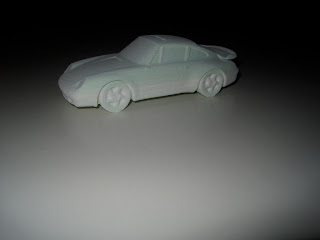
While browsing ebay, I noticed a lot of 2 3D printers for sale.
These machines were produced in the late 90s and use inkjet print technology to print in a plaster-based powder.
Once they arrived at Freeside Atlanta, they were unpacked and inspected. The machines were not in working condition, but fortunately all of the electronics seemed fine.
The biggest problem with these printers is that the binder solution is essentially a sugary mix run through very fine tubing. If not used frequently enough, the sugar crystallizes, blocking the tubes. I spent several hours cleaning all of the piping, taking care not to damage anything or lose any of the tubing. In the end, a total of around 40 hours was spent inspecting the hardware, disassembling / cleaning / reinstalling the tubing, and very hesitantly turning it on.
I am happy to say we now have one functional Z400 3D printer. Unfortunately, the material cost is rather high.
I wonder if our friends over at Open3DP labs can help with that! We are currently experimenting with some of their recipes.
Our second printer will be online as soon as we can fabricate a new plexiglass lid. It should be in very good shape as well, and simply needs a new ink cartridge.
I am happy to answer questions and demonstrate the hardware during Freeside meetings!
Click below for a video of a few layers of a print. Hopefully, I will be able to produce a complete stop motion animation soon.
Comments
Post a Comment